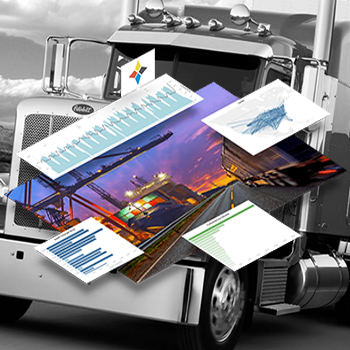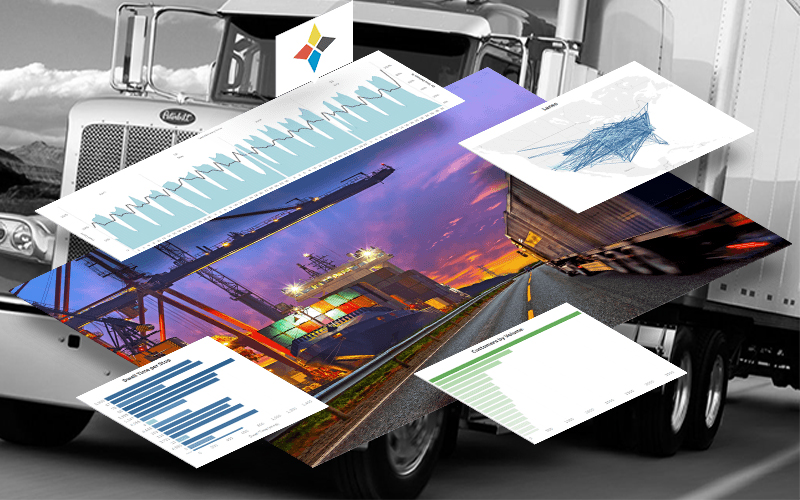Thanks to the electronic logging device (ELD) mandate, nearly every load that travels over United States roadways can be located at any given time with just the press of a button.
This information will often feed directly back into your Transportation Management System (TMS), giving you up-to-the-minute location information on your freight by way of hyper-accurate GPS technology.
But knowing where your loads are is only part of the battle if you’re looking to drive maximum efficiency and customer satisfaction across your loads.
Every load you move is an opportunity to learn how to improve your supply chain, minimize operating costs, and better serve your customers. To do that, you need to harness the power of big data.
The key to making your supply chain data work for you is realizing that every load you move is a constellation of valuable data points that can be used to rocket your business miles above the competition.
The carrier, the retailer, the DC, the cargo, the time of day, the highway, the region…all of these are valuable pieces of data that you can harness to recognize trends and improve business practices using real-world data and analytics. If you can monitor their performance for each of your loads over time, you can reap increasingly powerful benefits from the insights they reveal.
Increasingly, companies are seeing the need to supplement their real-time data with all-time data. In other words, you probably already know what time a load is scheduled to be picked up, but do you know what time the truck carrying it actually departs the facility?
Do you know how long it takes trucks to depart that facility on average, or how that compares to the average dwell times of other stops in that region? Do you know which carriers are consistently early, which are on time, and which are frequently delayed?
If you have a modern ELD system, you can see the dots on the map, but knowing the big picture is a critical advantage when it comes to managing your freight in the best possible way.
What if you could compare every load’s scheduled pickup time with the time at which it was actually picked up? What if you could then narrow that information by the carrier to find out which ones were consistently arriving late, and which were arriving early?
A truck that leaves late from the pickup facility is likely to arrive late at all subsequent stops along the way, including the final delivery. Finding out which of your stops, DC’s, and carriers and carriers are most frequently responsible for such delays goes a long way in more efficiently managing your supply chain.
Of course, it’s not always the carrier that’s causing a load to arrive late. Imagine if you knew not only how long a given truck or trailer had spent standing at a given stop, but what the average dwell time was at that stop, across every load and every carrier in your network?
What if you could tell which carriers took the most - or the least - time to pick up and drop off their loads at a given facility? You’d be able to allocate every load based on performance on that specific load.
You’d be able to see in advance when a single load is going to be late, but much more than that, you’d be the first to know exactly which stops and customers are experiencing long dwell times or low on-time delivery rates, and address them before anyone else has a chance to notice.
This kind of technology lets you peer back in time, drawing actionable insight from every load you’ve ever moved in order to make better decisions about the loads you move in the future. What’s more, because of modern machine learning capabilities, the more information you feed into a system like this, the more value you’ll be able to derive from it every time you use it.
We live in an exciting time for supply chain management. Information technology and the Internet of Things are giving us the capability to coordinate supply chain operations in a way that has never been possible before, improving efficiency every step of the way.
FourKites is leading the way in this kind of intelligent, data-driven supply chain visibility and orchestration. Go take a look.
Source: FourKites
Related Article: State of Transportation Management Systems Market 2018
Related White Papers & eBooks
Say Goodbye to Your Outsourced 3PL
In this eBook, we explain how companies that switch to the right TMS, experience a 10%-20% ROI on their freight spend in a matter of months, and how by taking back the management of their logistics operations in-house they make better shipping decisions every day. Download Now!
The Shippers Guide to Transportation Management System ROI
Taking a deeper look at the technology needs of transportation departments, Ohio State University Logistics Professor Jim Hendrickson conducted research into the value that supply chain execution systems provide. Download Now!
E-Commerce Transportation Execution
In this white paper, we’ll further explore the key challenges that shippers are facing in the e-commerce/omnichannel environment and show how transportation execution and optimization is already helping companies jump these hurdles, improve customer service levels, and cut costs. Download Now!
5 Reasons to Buy a True SaaS Transportation Management System
This white paper describes how a true SaaS infrastructure can give users real-time benchmarking of transportation rates, and connect your company to a Global Trade Network. Download Now!
More White Papers on Transportation Management Systems
Article topics
Email Sign Up






















